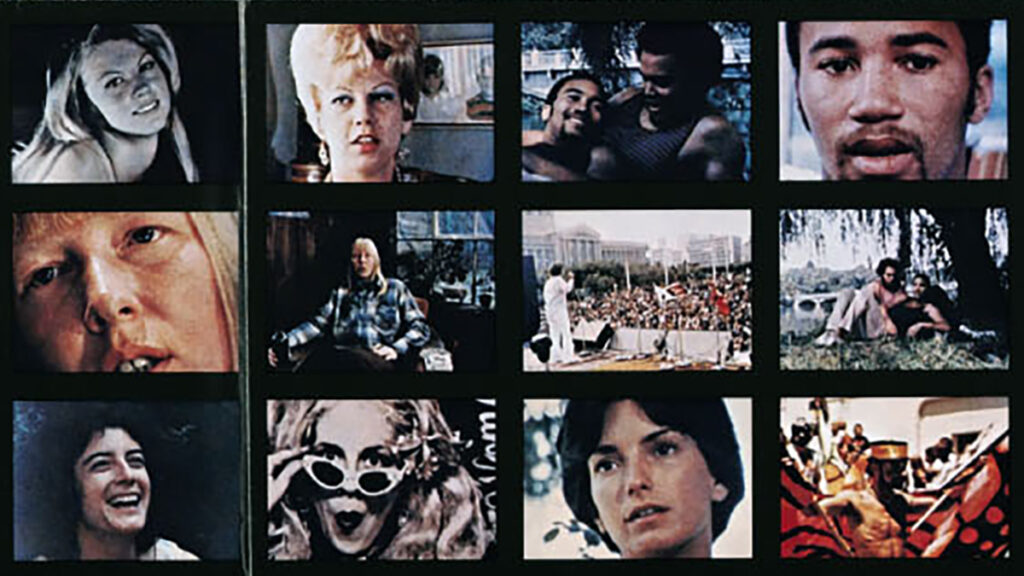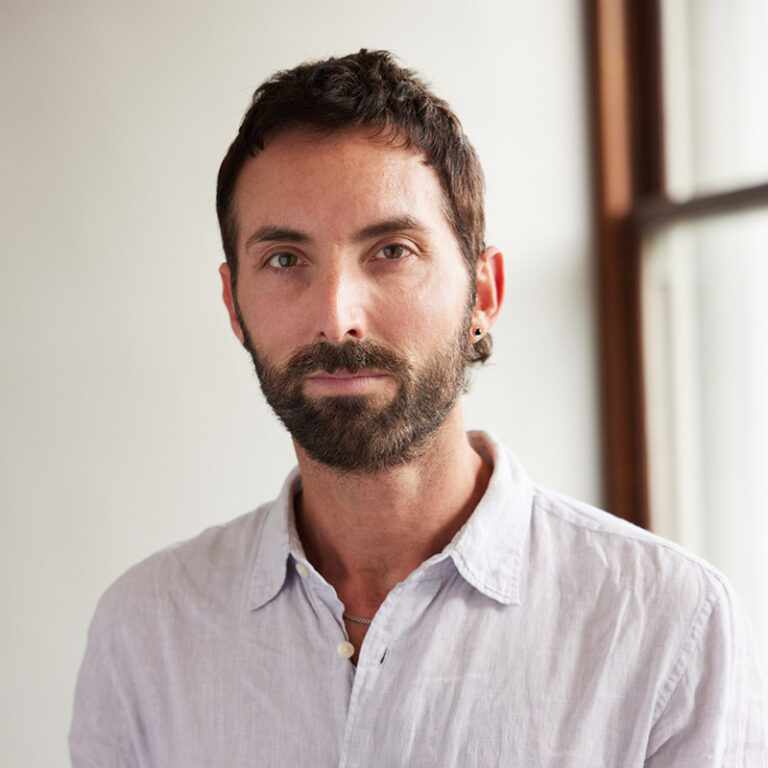Film Changed the Way People Saw Sexuality. Now, Social Media Does.
Film’s strong influence on society’s ideas about gender in the 20th century shifted attitudes about who could express their sexuality in public, and how. Today, similar shifts are happening with the dominant cultural medium of our age: social media.

The plot of Alfred Hitchcock’s 1948 film, Rope, is a disturbing one: Two men in their shared apartment strangle a former classmate to death. Then, they host guests — including the victim’s family — at a dinner party. It’s an attempt to prove their superiority by committing the “perfect murder.”
Although the killers — Brandon and Phillip — live together, it’s never acknowledged openly that they’re a couple. (At the time, the Motion Picture Production Code prohibited the depiction of “sex perversion,” which included homosexuality, on the big screen.)
It’s a classic example of homosexuality being “represented” in film through closeted characters, said Damon Young, a UC Berkeley associate professor of film and media, and one in which the “transgression” of homosexuality is displaced onto the transgression of murder.
Young is the author of Making Sex Public and Other Cinematic Fantasies, a 2018 book that explores how portrayals of queer sexuality and women’s sexuality began to shift in film in the U.S. and France in the 1960s and ‘70s. Given that film had a strong influence on society’s ideas about gender, these shifts changed attitudes about who could express their sexuality in public, and how. Today, he said, similar shifts are happening with the dominant cultural medium of our age: social media.
In this Q&A, Young discusses the power of new media — film in the 20th century, and today, the social network — to influence our ideas, fantasies and fears about gender and sexuality. It has been edited for length and clarity.
Berkeley News: In Making Sex Public and Other Cinematic Fantasies, you explore the representation of women’s and queer sexuality in film and how its portrayal transformed society’s ideas about them. Did film as a medium influence people’s perceptions in ways that other media didn’t at the time?

Jen Siska/UC Berkeley
Damon Young: Part of the argument of the book is that cinema was the most influential medium on our ideas, fantasies and fears about gender in the 20th century.
Susan Sontag, a critical essayist and novelist, called the 20th century the “century of cinema,” whereas in the 19th century, the novel was arguably the dominant medium of cultural fantasy. If you think about the extent to which narrative films depend on channeling ideals about gender — with their stories of romance, desire and heterosexuality, their fantasies of masculinity, nationhood and race — then it’s clear that what is represented in cinema, as well as what isn’t, plays a huge role in shaping the way we thought about women’s sexuality and queer sexualities in this period.
What are some examples of films you examined?
I tried to choose films from a wide range of genres — popular, like Barbarella (1968); experimental, such Agnès Varda’s Women Reply (1975); documentary, for example Word is Out (1977); and those, like Shortbus (2006), that push the limits of cinematic representation of sex.
How had women’s and queer sexuality been expressed in film before the 1960s and ‘70s? And how, broadly, did it expand and change during this time in the U.S. and France?
This is a huge question, but as you know, the ‘60s and ‘70s were the periods of so-called “women’s liberation,” though the question of what “liberation” means was a key one, and following on that, the emergence of a public movement towards gay, lesbian, bisexual and transgender rights. It was also, of course, the period of the massive gains of the civil rights movement and Black radicalism, as well as global critiques of capitalism and colonialism.
My book focuses on gender and sexuality, which of course are not separate from these other struggles, but emerge out of and alongside them. At the risk of being simplistic, we could say that before these movements, homosexuality couldn’t be shown at all in film, or even imagined. As the “love that dare not speak its name,” as Oscar Wilde once quipped, it could only be alluded to obliquely. In fact, this proscription was written into the Motion Picture Production Code that operated roughly from 1930 to 1960.
Women’s sexuality had a much wider range of representations, if you consider the charged nature of earlier figures, such as the femme fatale of 1940s film noir or the strikingly independent women in 1920s silent cinema. But the ideal that conditioned most representations of women’s sexuality was one that dictated that its proper place was the home, inseparable from maternity, and always inscribed in relation to heterosexual male desire.
In the 1960s and ‘70s, we started to see a lot more representations of women as autonomous sexual beings, whose sexuality wasn’t dependent on men and was separate from domesticity and motherhood.
Before the 1960s, in films like Hitchcock’s Rope and the 1960 French New Wave film, Purple Moon, you say that we see the displacement of a homosexual desire that can’t be named into murderousness or criminality. How did this begin to change in the ‘60s?
Homosexuality became imaginable and representable, but it was still associated with murderousness and criminality, as in Cruising, the (actually amazing) 1980 film starring Al Pacino.
My argument, though, is not as simple as saying that these films are homophobic — clearly they are that, quite literally. Perhaps more interesting is that they model the contradictions, as well as the anxieties, at the heart of a normative masculinity that defines itself as white and heterosexual, under pain of death.
These seemingly homophobic films tell us something about the contradiction of masculinity in our culture, which is a subject I intend to take up in relation to the contemporary moment in a subsequent book.
In the book, you talk about the 1977 documentary Word Is Out, and how showing queer people in the traditionally private sphere — in their homes, with their families — was radical. Why?
This film was screened on public access television and thus was widely seen by people who had maybe never previously thought about the existence of gays and lesbians. It is often seen to be part of a conservative turn in queer politics, indeed, the beginning of the movement that tried to present an image of gays as “respectable” and “normal.”
Activism in the preceding Stonewall era, which began in 1969 after police raided a gay nightclub in New York City, emphasized more obviously radical visions of queer difference, often in community and in public, rather than domestic, spaces.
The film’s gesture is radical in the sense that it challenges the implicit heterosexuality, the ideology of gender difference, that shapes the liberal notion of the private sphere, and in so doing challenges this foundational premise of the social order. And it does so on television, thus invading the home in a second sense.
You’ve said that in writing Making Sex Public you wanted to understand the prehistory of the fears and fantasies that animate contemporary politics, which remain battlegrounds in an ongoing culture war. How are these fears and fantasies showing up in and shaping the politics of the current culture war against women and LGBTQ+ communities?
If you consider the widespread attacks on abortion rights today, women remain a primary battleground in contemporary politics around the idea of autonomy: Who controls women’s bodies and their rights to them?
This question of autonomy, in the specific sense of consent, was also fundamental to the emergence of the #MeToo movement, which made visible the quotidian, taken-for-granted forms of sexual harassment and bias that have shaped the norms of many institutions, such as Hollywood cinema and educational institutions. These are both forms of “making sex public,” which means both making it visible and bringing it into the framework of politics, from which it had traditionally been excluded in the liberal tradition that deemed sexuality “private.” Now, it is not so private.
The fears and fantasies are very complex, but are ultimately about power — who has it, and wants to maintain it. The assaults on trans rights and so-called “gender ideology” around the world today are a response to a threat to the traditional holders of power, and they attempt to seize on the already established anxieties around gender and sexuality that I analyze in the book.
You’re working on a new book project, Century of the Selfie, about the way people are using digital media practices to market themselves and make themselves into brands. How is social media today similar or different from film in the ‘60s and ‘70s in its power to transform society and perceptions around sexuality?
If the 20th century was the century of cinema, meaning that cinema was the dominant cultural medium, the 21st is the century of the network.
Networked life — our being permanently plugged into networked and portable media, and thus more mediated than ever in our very experience of subjectivity — is an inescapable condition of contemporary life, and this means “representation” in the sense of the way things are depicted in, say, a novel or film is no longer the primary way media shapes our experiences of gender and sexuality. Our experiences are mediated from the beginning, so the influence — more than an influence, a co-constitution — is profound.
One of social media’s functions is to connect us to others. Indeed, being “connected” is a contemporary imperative.
While this has a social function in a positive sense, it also produces a whole set of other affective and psychic dispositions, such as FOMO, anxiety, self-esteem issues, the quest for likes, retweets, views, etc., the quantification of everything, including numbers of “friends” and thus the transformation of all experience, including the most intimate, into data. It is this set of conditions — good and bad, or neither good nor bad, but real — that I investigate in the book.
